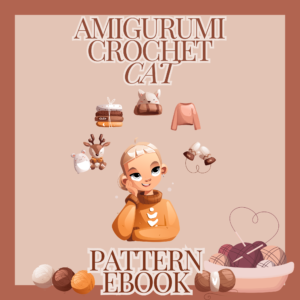In a world dominated by digital communication, the art of writing by hand is gradually fading away. However, there is one style of writing that still retains a sense of elegance and timeless appeal – cursive font.
From its rich history to its place in modern society, cursive font holds a special allure.
Explore the significance of cursive font, its benefits, practical applications, and even touch upon the ongoing debate surrounding its relevance in the digital age.
Writing in cursive font involves connecting letters together, creating a flowing and continuous script.
This distinct style of writing has been practiced for centuries and holds a unique place in various aspects of life.
Cursive font continues to captivate individuals with its aesthetic charm and individualistic touch.
What is Cursive Font?
Cursive font, also known as script or joined-up writing, is a style of penmanship characterized by the flowing and connected letters.
In cursive font, the letters are written without lifting the pen or pencil, resulting in a smoother and more fluid writing experience.
The History of Cursive Writing
The origins of cursive writing can be traced back to ancient civilizations, where scribes developed scripts that allowed for faster writing.
The Romans, in particular, introduced the cursive script as a way to improve writing speed and efficiency.
Over time, various styles of cursive writing emerged, each with its own unique characteristics and regional influences.
The Importance of Cursive Font
Cursive font holds a significant place in our society for several reasons. Firstly, it preserves our cultural heritage and connects us to the past.
By learning and using cursive font, we honor the traditions of our ancestors and maintain a link to our history.

Additionally, cursive font offers a personal touch and elegance that cannot be replicated by typing or printing.
Benefits of Using Cursive Font
Improved Handwriting Skills
Practicing cursive font can greatly enhance one’s handwriting skills. The continuous flow of letters encourages smoother and more precise movements, resulting in neater and more legible writing.
Enhanced Brain Development
Studies have shown that learning cursive font can stimulate brain development, particularly in areas associated with language, memory, and cognition.
The intricate movements required when writing in cursive engage multiple parts of the brain, fostering better neural connections.
Quicker Writing Speed
Once mastered, cursive font allows for faster writing speed compared to printing or typing.
The connected letters and fluid motions enable a more efficient writing process, making it an invaluable skill in situations that require rapid note-taking or writing.
Personal Touch and Elegance
Cursive font adds a personal touch and elegance to any piece of writing. Whether it’s a heartfelt letter, a beautifully crafted invitation, or an artistic composition, cursive font adds an element of sophistication and individuality.
Cultural Significance
Cursive font has cultural significance in many societies around the world. It is often associated with tradition, formality, and artistic expression.
For example, calligraphy, an intricate art form that relies heavily on cursive font, holds great importance in Eastern cultures.
Cursive Font in the Digital Age
With the proliferation of digital devices and keyboards, the relevance of cursive font has been called into question. Many argue that typing and texting have replaced the need for handwriting skills.
However, cursive font still finds its place in the modern world, particularly in artistic endeavors, personal correspondence, and signature writing.
Common Cursive Fonts
There are several popular cursive fonts used today, each with its own unique style and characteristics. Some widely recognized cursive fonts include:
- Italic – Elegant and slanted, resembling handwritten script.
- Copperplate – Elaborate and ornate, often used in formal invitations and certificates.
- Spencerian – Graceful and rhythmic, known for its elaborate flourishes.
- D’Nealian – Simplified and easier to learn, commonly taught in schools.
How to Use Cursive Font Effectively
To make the most of cursive font, it is important to use it effectively and consistently. Here are some tips for using cursive font:
Choosing the Right Typeface
Select a cursive font that suits the purpose and tone of your writing. Consider factors such as legibility, formality, and personal preference.
Adjusting Letter Spacing and Size
Ensure that the letters are properly spaced and sized to maintain readability. Avoid excessive slanting or crowding of letters.
Proper Letter Formation
Pay attention to the correct formation of each letter. Practice the fundamental strokes and letter shapes to achieve a consistent and aesthetically pleasing script.
Consistency in Writing Style
Maintain a consistent writing style throughout your cursive font. Consistency not only enhances readability but also adds to the overall visual appeal.
Cursive Font in Education
Despite the ongoing debate surrounding the relevance of cursive font in modern education, many schools still teach it as part of their curriculum. Learning cursive font provides students with the ability to read historical documents and develop fine motor skills, reinforcing the importance of this timeless skill.
Cursive Font in Art and Design
Cursive font plays a vital role in art and design. From calligraphy to typography, cursive fonts are used to evoke a sense of elegance, creativity, and personal expression. Many artists and designers incorporate cursive font in their work to add a unique and visually appealing touch.
Cursive Font in Signatures
Signatures hold legal and personal significance, and cursive font often plays a prominent role in their creation. A well-crafted cursive signature adds a touch of professionalism and authenticity to documents and contracts.
Cursive font continues to hold a special place in our society, despite the rise of digital communication. Its unique charm, elegance, and personal touch make it a valuable form of expression. From improving handwriting skills and stimulating brain development to adding a sense of individuality and cultural significance, cursive font offers numerous benefits.
While there is ongoing debate about its relevance in the digital age, cursive font still finds its purpose in various domains. Whether it’s in education, art and design, or the creation of signatures, cursive font adds a distinctive flair that cannot be replicated by typing or printing.
By embracing cursive font, we preserve our cultural heritage and maintain a connection to the past. Learning and practicing this timeless skill not only enhances our writing abilities but also fosters creativity and self-expression.
So, let us not forget the artistry and elegance that cursive font embodies. Embrace the beauty of this unique script and keep the tradition alive.
Frequently Asked Questions (FAQs)
Is cursive font still relevant in the digital age?
Despite the dominance of digital communication, cursive font still holds relevance, particularly in artistic endeavors, personal correspondence, and signature writing.
Does learning cursive font have any cognitive benefits?
Yes, studies have shown that learning cursive font can stimulate brain development, enhancing areas associated with language, memory, and cognition.
Can cursive font improve handwriting skills?
Practicing cursive font can greatly improve handwriting skills, encouraging smoother and more legible writing through the continuous flow of letters.
What are some popular cursive fonts?
Some widely recognized cursive fonts include Italic, Copperplate, Spencerian, and D’Nealian, each with its own unique style and characteristics.
Is cursive font still taught in schools?
While the teaching of cursive font has become less common, many schools still include it as part of their curriculum, emphasizing its historical importance and fine motor skill development.


































